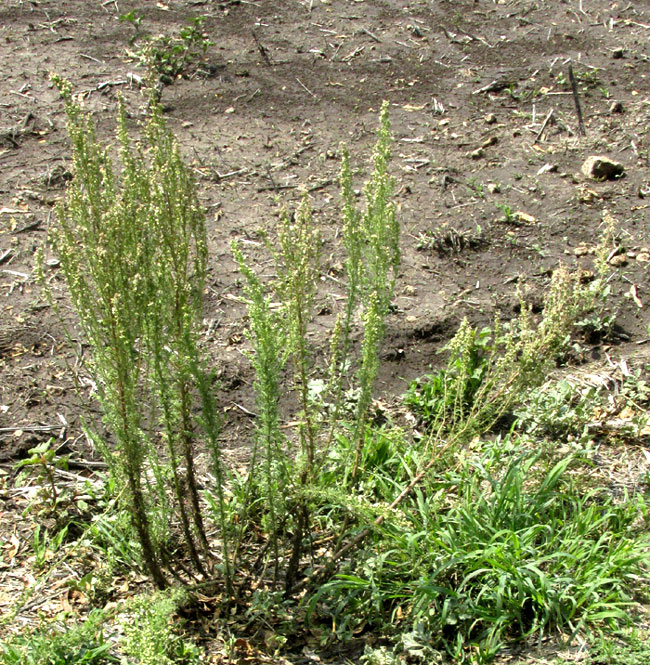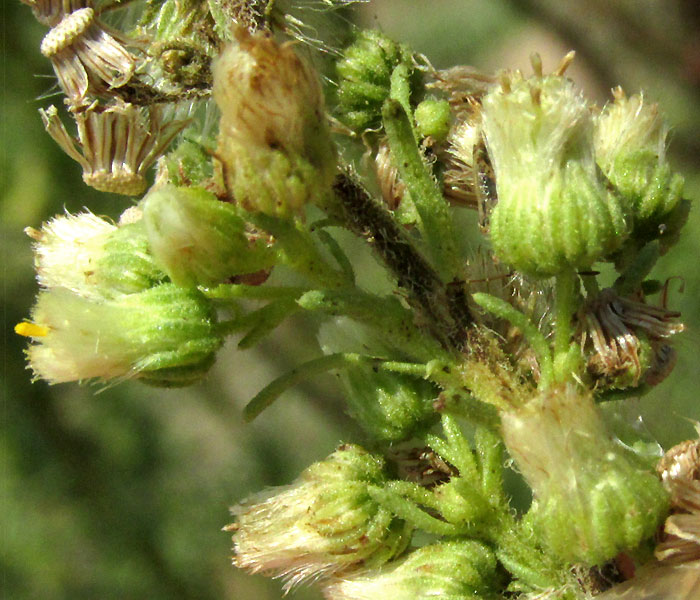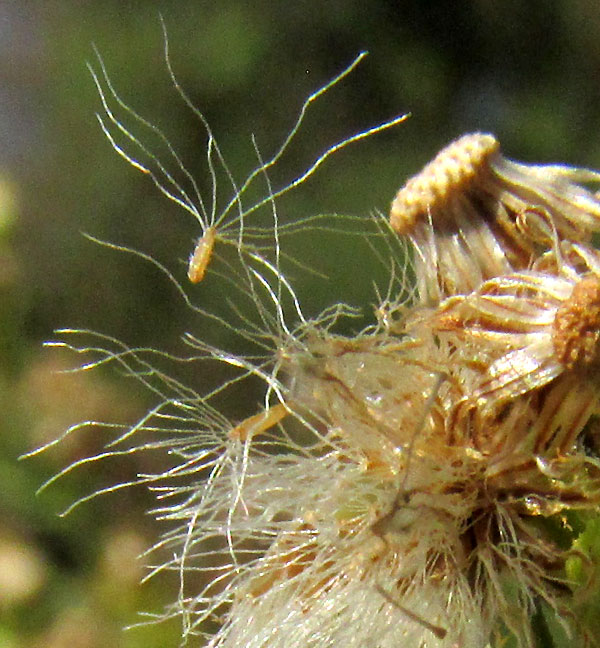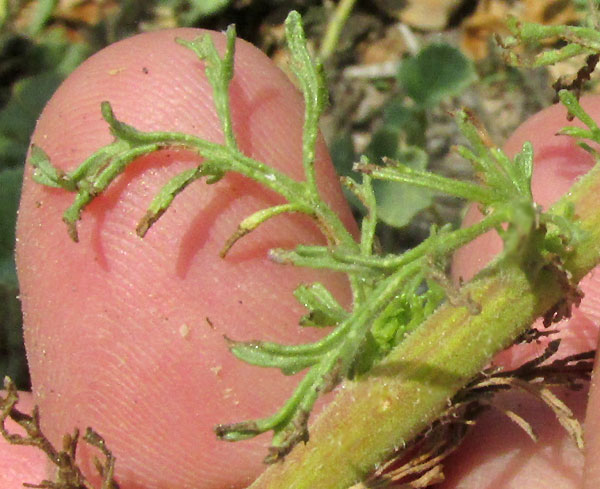Excerpts from Jim Conrad's
Naturalist Newsletter
entry dated August 18, 2022, issued from near Tequisquiapan, elevation about 1,900m (6200 ft), N20.565°, W99.890°, Querétaro state, MÉXICO
LEAFY HORSEWEED

At the edge of a fallow cornfield left unplanted until now because the rainy season came two months late, the above weed was prodigiously flowering and fruiting as if no drought had taken place. With such slender stems cloaked at the base with thin, dying back leaves, and the big, branching inflorescences bearing many very small flowering heads, those familiar with wildflowers and weeds will recognize the plant as a horseweed. However, lots of horseweed species are recognized and their taxonomy is a mess, so horseweeds can be a challenge to identify.

The above close-up of part of a much-branched inflorescence at the plant's top densely cluttered with many flowering heads on leafy stems is very typical of horseweeds. Here's a close-up of some flowering heads:

Horseweeds are members of the largest of all plant families, the Composite or Aster Family, the Asteraceae. In that family, florets are tightly clustered into heads called capitula. The capitula are held together by usually green, cuplike structures called involucres. Involucres are composed of scale-like members called phyllaries, as shown above. For identification purposes the fact that our horseweed's capitula consist of phyllaries whose midribs are green, and not orangish and resiny, is important to notice.
In Aster Family capitula, two types of florets are possible: slender, cylindrical disc florets grouped in the capitulum's center, and; flat ray florets clustered around the capitulum's edge like petals on many flower types. In the above picture some capitula show disc florets' stamens rising above the fuzzy mass, but there's no sign of ray florets. This is an important diagnostic feature, and a confusing one. The experts tell us that the capitula of this speciescontain many ray florets, but these ray florets lack not only stamens but also the flat, petal-like rays. The stamenless, rayless ray florets do produce fruits, though -- and lots of them.

In the above picture, florets in older capitula already have discarded their corollas, and their ovaries have enlarged and matured into one-seeded, cypsela-type fruits, and they have been dispersed. Above, in the image's top, right corner, an old fruiting head has lost all its fruits. Some of these fruits have tangled with one another, as seen in the picture. Horseweed cypsela bear long, slender bristle, which serve as parachutes enabling fruit dispersal by wind. Each capitulum in this species produces about 25-45 florets, and you see how many florets this plant produces in its large inflorescence. Just imagine how many offspring this single plant is capable of producing.

Most horseweed leaves consist of a long, flat blade with no lobes, but this one's leaves are very deeply lobed, and that's diagnostic for determining the species. Also note that the stem is slightly rough-hair with short hairs.
Especially taking into account our plant's phyllaries with their green midribs, and the absence of flat, petal-like rays along the capitula's perimeter, all the above features lead us to the genus Laënnecia. Our plant looks very much like the common horseweed throughout North America, genus Conyza, but the midribs on phyllaries of Conyza are "orange resinous," not green without resin glands, like our plant's.
The genus Laënnecia is one of at least three genera whose species can be called horseweeds. At this time it embraces about 18 species, of which maybe five occur in our highland, central Mexican region known as the Bajío. In our area, if you have a Laënnecia looking as if it has no ray floret's at all (though it contains many rayless ones), and the leaves are deeply thin-lobed as shown above on ours, you have LAËNNECIA SOPHIIFOLIA.
Laënnecia sophiifolia, as defined at this writing, is distributed from the dry southwestern US south through Mexico and Central America to Bolivia and Argentina in South America. It occurs in mostly semi-arid, disturbed soils but also sometimes in pine and oak-pine forests. Since it's found in the US, the US Department of Agriculture bestows on it the English name of Leafy Horseweed. All horseweeds are leafy, but this one with its deeply lobed leaves calls attention to its leaves.
In Mexico Leafy Horseweed is described as medicinal, but I can't find what it's medicinal for. However, in a 2001 study by D A Cifuente and others, entitled "Antiinflammatory activity from aerial parts of Baccharis medullosa, Baccharis rufescens and Laennecia sophiifolia in mice," the paws of mice were irritated by exposing them to carrageenan, and it was found that chloroform extracts from Laënnecia sophiifolia "inhibited the acute phases of inflammation."